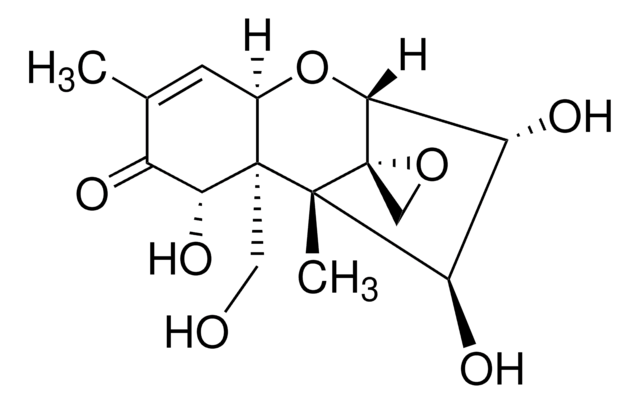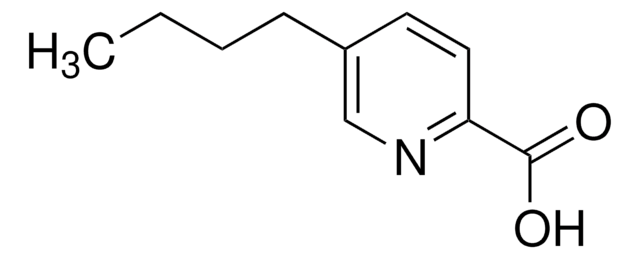IRMM316
Nivalenol in Acetonitril
IRMM®, certified reference material
Synonym(e):
Nivalenol -Lösung, 3α,4β,7α, 15-Tetrahydroxy-12,13-epoxytrichothec-9-en-8-on, NIV
About This Item
Empfohlene Produkte
Qualität
certified reference material
Agentur
IRMM®
Hersteller/Markenname
JRC
Anwendung(en)
general analytical
Format
matrix material
SMILES String
[H][C@]12O[C@]3([H])[C@H](O)[C@@H](O)[C@@](C)([C@]34CO4)[C@@]1(CO)[C@H](O)C(=O)C(C)=C2
InChI
1S/C15H20O7/c1-6-3-7-14(4-16,11(20)8(6)17)13(2)10(19)9(18)12(22-7)15(13)5-21-15/h3,7,9-12,16,18-20H,4-5H2,1-2H3/t7-,9-,10-,11-,12-,13-,14-,15+/m1/s1
InChIKey
UKOTXHQERFPCBU-XBXCNEFVSA-N
Suchen Sie nach ähnlichen Produkten? Aufrufen Leitfaden zum Produktvergleich
Hinweis zur Analyse
IRMM316
Rechtliche Hinweise
Signalwort
Danger
Gefahreneinstufungen
Acute Tox. 4 Dermal - Acute Tox. 4 Inhalation - Acute Tox. 4 Oral - Eye Irrit. 2 - Flam. Liq. 2
Lagerklassenschlüssel
3 - Flammable liquids
WGK
WGK 2
Flammpunkt (°F)
35.6 °F - closed cup
Flammpunkt (°C)
2.0 °C - closed cup
Hier finden Sie alle aktuellen Versionen:
Analysenzertifikate (COA)
Leider sind derzeit keine COAs für dieses Produkt online verfügbar.
Wenn Sie Hilfe benötigen, wenden Sie sich bitte an Kundensupport
Besitzen Sie dieses Produkt bereits?
In der Dokumentenbibliothek finden Sie die Dokumentation zu den Produkten, die Sie kürzlich erworben haben.
Unser Team von Wissenschaftlern verfügt über Erfahrung in allen Forschungsbereichen einschließlich Life Science, Materialwissenschaften, chemischer Synthese, Chromatographie, Analytik und vielen mehr..
Setzen Sie sich mit dem technischen Dienst in Verbindung.







